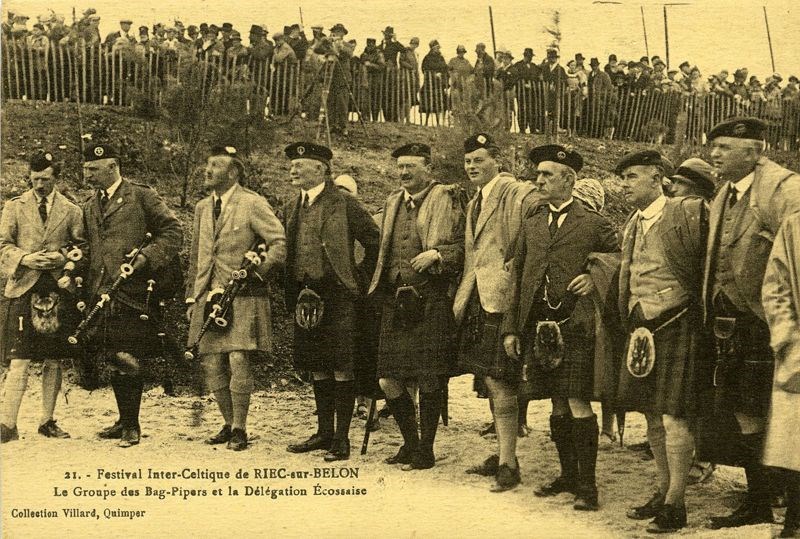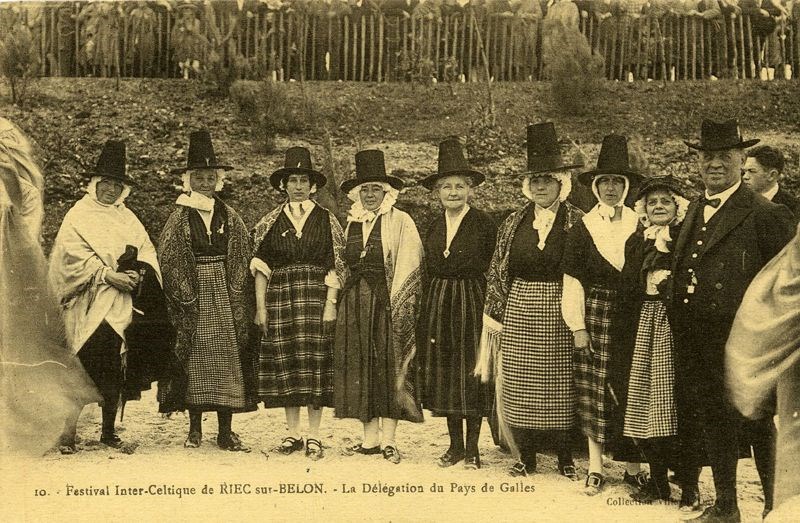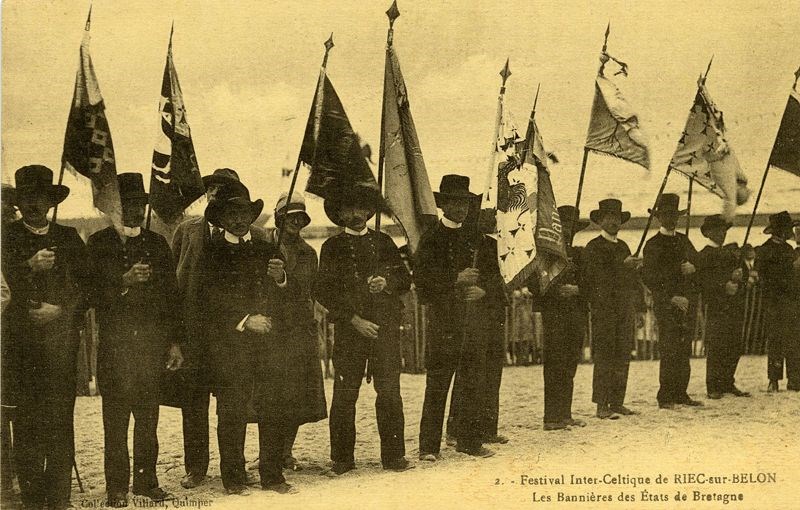The terms “panceltic” and “celtic” were mainly in use at the beginning of the 20th century as a descriptive for different events, but in the 1920s the term “interceltic” started to emerge and became the standard after the Second World War. In 1927, the first festival to be described as “interceltic” took place in Riec-sur-Belon. It was organised thanks to the Breton Consortium, the regionalist organisation who published a magazine of the same name. The two main organisers were the druid Taldir Jaffrennou and local entrepreneur Jean de Saisy de Kerampuil. A few months earlier, in the spring, they had been part of a Breton delegation to the British Isles which aimed to establish political, cultural and economic connections. The trip inspired Kerampuil to follow the Irish example of using peat to generate electricity in the monts d’Arrée.
The festival began on 19th August with a welcome ceremony for the Scottish, Cornish, Manx and Irish delegates, as well as the Occitan, Canadian and Flemish attendees. Around 150 people paraded through the streets of Riec as part of a big procession. “At the head of the procession were the Scottish pipers, their country delegates just behind them,” read the Breton Consortium magazine. “Following a short distance away were groups of Breton pipers from Riec, Bannalec, Pont-Aven, Carhaix, Saint-Thois, etc. Then came fifteen glorious banners emblazoned with the coats of arms of the old Breton regions, kindly lent by the Breton Regionalist Union. The Irish, Welsh and Cornish delegations followed…”

Brittany’s Gorsedd, a fraternity of druids, poets and bards of which Taldir was a founding member, was experiencing a revival at the time and played a part in the organisation of the festival. The druids held a grand ceremony on Kerco moor, just outside Riec, where a modern-day megalith made up of five menhirs had been erected. As the Breton Consortium explained, these were “a truncated cone shape assembled from breezeblocks, then covered with a cement render that was scored with longitudinal lines.” Beneath this unusual monument were buried bottles containing an interceltic profession of faith written in Breton, French and Gaelic.
After the druid ceremonies, a great banquet was held for over two thousand guests. In the afternoon, more than thirty thousand people, according to the organisers, made their way up Kerco hill, to watch athletics tournaments and a splendid gouren wrestling contest between Breton and Cornish wrestlers. They could also watch or even participate in a gavotte dancing contest, as well as “dances au biniou”- dances accompanied by Breton bagpipes and bombards. Of course, Celtic music was omnipresent, and the spectators gave a triumphant welcome to the Scottish pipers and dancers. An all-female Welsh choir in traditional costume was also given a standing ovation.

The first interceltic festival continued the next day, Sunday 20th August 1927, in the same lively atmosphere. Even though it was a much smaller event compared with today’s interceltic festival, the event in Riec is still seen as the precursor to an altogether much bigger affair. The neo-druid ceremonies are no longer part of the programme, but the event certainly brought together all the other components which make celebrating contemporary interceltism so successful: a joyful atmosphere, a variety of Celtic music offerings and international connections. This first interceltic festival had no immediate follow-up, but in the 1930s, on the fringes of the Gorsedd’s ceremonies, “Celtic parties” were regularly organised, to which foreign delegates and musicians were invited.
Translated by: Tilly O’Neill


